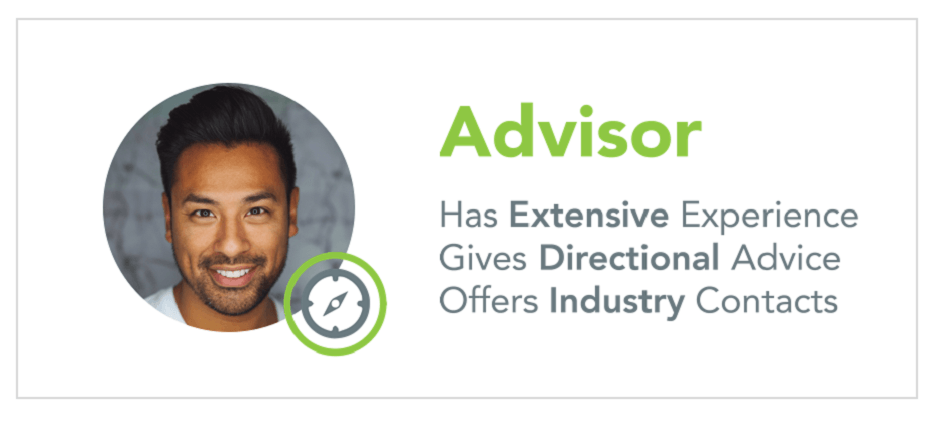
If you you’re looking at changing careers or are still trying to find the right career fit — fear not. Most people switch careers anywhere between five and eleven times on average.
Before switching careers, you’re going to want to make sure it’s the right fit.
You may be wondering:
- “Even if I like it on paper, what does the career switch look like in reality? What are the big things I should be considering before making this move?”
- “What are the differences in switching between small, mid-size, or large companies in this field? What opportunities exist for me?”
- “Should I specialize or be more of a generalist? Work as a freelancer or employee?”
How do you find this information?
The internet is where you’ve likely started looking. But, if you are reading this, you also know deep down that the internet is not enough.
While it may help you research new careers, the generic advice the internet offers can’t answer your most pressing questions – the ones you need answered before you can take your next step. Without answers, you’re stuck.
Changing careers is a big decision that deserves proper research. You don’t have the time to waste on the wrong tactics.
So how do you get the answers you need to feel confident enough to switch careers?
Connect to your network
Networking helps you get out of career paralysis and decide on a new career faster. Yet, reaching out to just anyone won’t be much more helpful than your internet research.
To figure out which career to switch to and how, you need to network with the right people.
But who are the right people, and how to do you find them?
Your LinkedIn network is a great place to start. While most of us are good at adding connections to build our network, we’re not so good at tapping our network and actually making good use out of it.
With only a hundred connections, your personal LinkedIn likely contains tens of thousands of 2nd-degree connections. These are all people you are “related to” in the professional sense – and any of them could have the answers you need to questions about your career change.
Here’s five steps you can take to get the career change answers you’ve been looking for:
1. Outline the career switch information you need

To find the right people to network with, start with what you need to know. Not all your connections are the same, and they have different experiences to share. You’ll need to pair up what information you’re looking for with those who could have the answers.
If you’re figuring out which careers you could potentially switch to, you’ll likely want:
- Advice for how to leverage your background when switching to a new career
- A big picture overview of the field
- To understand your different career options and tradeoffs
- Recommendations on the best organizations and companies that fit your interests
- Introductions to people in your desired field
Having an organized list of what information you need to confidently make a career switch helps you to zero in on the best connections–connections who have the right experience to answer your questions.
2. Learn how to identify the right people – the people that hold the answers to your pressing career change questions

It’s an old-style networking myth that senior connections matter most.
In fact, senior-level people are much less likely to relate to the questions you have. They’re harder to reach and more intimidating to talk to. There are people in your network you would have much more productive conversations with, so don’t bother reaching out to executives. It’s not worth the anxiety or the effort.
The best people for you to talk to about switching to a new career are those with 5-10 years of experience in your desired field.
Choosing seasoned – not senior–people means you’ll be talking with people who can still relate to you.
At MANGO, we refer to people with 5-10 years of experience in their industry as one of our four networking Connection Types: “Advisors.”
Advisors are the Connection Type that understand how a field works and how to successfully navigate it.
They can describe the big picture that you can’t see yet. Advisors can easily explain your different career options and tradeoffs within their industry – information that’s second-nature to them that may be nearly impossible to find online.
At this point in their career, Advisors don’t know the day-to-day details of specific jobs you may be looking at. Save the job-specific questions for another Connection Type – Guides.
Advisors will take you under their wing. They are used to solving problems. They like to test their expertise by solving issues you might have. And they willingly make introductions for you to people in their expansive network. So, be prepared with your career change wish list.
Unlike those 15 to 40 years ahead of you, Advisors shouldn’t intimidate you. They should coach you.
You know what questions you need answered and what type of people may be most helpful – but where do you find them?
3. Asking friends and family for Advisor connections

To find Advisors, start by asking your coworkers and friends for recommendations. Contacts you get through people you know well are more responsive than those you find through other means.
Here’s a warning: make sure to be specific about that you’re looking for an Advisor when you ask for introductions to new connections.
Focus on the 5-to-10-year-rule. Otherwise, you are could get awkward introductions to people who are well beyond 5-10 years in their industry who may not have the pertinent information you need.
If you get some ideas, verify those contacts have the relevant experience you are looking for before meeting them for the first time. Ask your friend a few clarifying questions about their recommended contact, or scan the contact’s LinkedIn profile.
It’s worth the extra step to qualify any recommendations. It helps ensure you focus your effort on the people that can help you and avoid wasting time and energy on those who can’t.
4. Search your LinkedIn network for Advisors
It’s hard to keep track of who you may know. That’s where LinkedIn can come in handy.
You can begin your search for Advisors in your alumni network or association affiliations. Advisors also might be former coworkers or bosses that now work at a different company. If you have any business cards you were handed at an event, it’s time to dig those up and see if they’d be helpful Advisors.
If it’s been awhile since you’ve touched your LinkedIn, add any relevant connections you can think of that aren’t already in your LinkedIn network.
If you’re like most people, you are not taking advantage of all that your LinkedIn network has to offer. You either underestimate the number of relevant connections, or you don’t know how to find the best people to network with among the thousands of search results.
Solve this in minutes with this quick, free step-by-step LinkedIn Search for Career Explorers Course to help you find Advisors on your LinkedIn.
5. Start requesting conversations with Advisors
Once you find the right networking connections, it’s time to write that email asking for a conversation. You’ll find the answers you seek about switching careers through one-on-one conversations with them.
Writing an email asking for an informational interview is a difficult balancing act. You want it to be professional, yet friendly. You want to talk about yourself, but not too much. You want to make it easy for them to fit this conversation into their schedule, but without being overbearing. And you’re wary of using generic email templates – what if they’ve seen that template before? Is this template even any good?
MANGO’s Email Builders can help with that.
MANGO’s FREE Conversation Request Email Builder guides you step-by-step through every part of your outreach email, coaching you through what to say and how to say it. When you write an email using MANGO as your guide, you’ll end up with a perfectly balanced conversation request email.
No one navigates their career alone. Finding the right people to help you is easier than you think. Give it a try. Start writing that outreach email to start exploring new options for your career future.
Can we send you a useful email?
More articles like this one, tips you can really use, and advice that makes your next career move easier.
Sue Wollan Fan is the Founder & CEO of MANGO, a free networking tool whose mission is to expand opportunities for all by making networking easier, accessible, and more human. She has mentored hundreds to succeed professionally while serving as a corporate executive, nonprofit leader, tech entrepreneur, and mother of three. She is passionate about helping others do work that matters.
